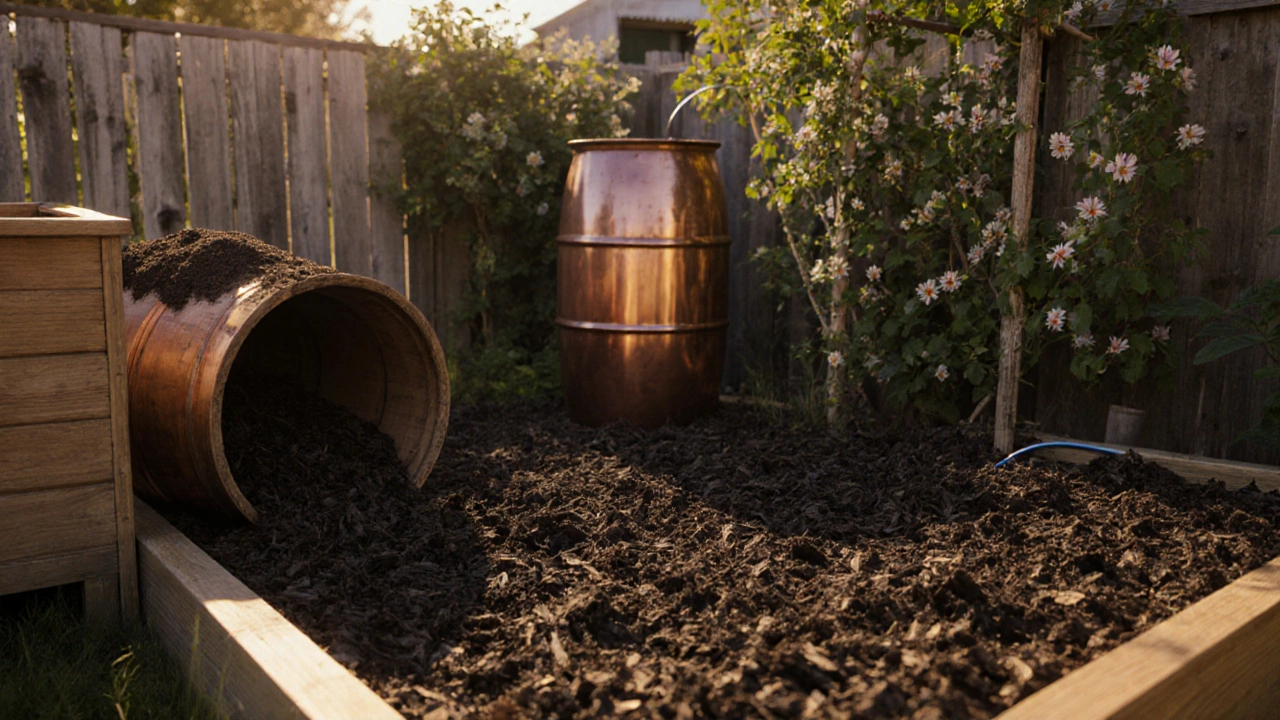Discover the top alternative names for sustainable gardening, their meanings, best uses, and practical tips for greener planting.
Climate-Smart Gardening: Grow Stronger Plants in India's Changing Weather
When you practice climate-smart gardening, a way of growing plants that works with local weather patterns instead of fighting them. Also known as resilient gardening, it’s not about fancy tools or expensive imports—it’s about using what’s already around you to keep your garden alive when the monsoon fails or summer hits 45°C. This isn’t a trend. It’s what farmers and home gardeners in Rajasthan, Tamil Nadu, and Maharashtra have been doing for generations—just without the label.
At the heart of climate-smart gardening is soil health, how well your dirt holds water, feeds plants, and supports roots under stress. When soil is dense and lifeless, rain runs off instead of soaking in. Add compost, leaf mold, or even crushed dry leaves, and suddenly your garden holds moisture longer, cuts down on watering, and keeps roots cool. This isn’t magic—it’s biology. Healthy soil acts like a sponge, a buffer, and a pantry all at once. Then there’s water-efficient gardening, using less water without losing plant health. Drip lines, mulch, and grouping plants by water needs aren’t just for experts. They’re simple fixes anyone can do. If your drip emitters clog, clean them. If your pots dry out in two days, add a layer of straw. Small steps add up when the taps run low.
You’ll also notice that climate-smart gardening picks the right plants. Not the ones that look pretty in magazines, but the ones that actually survive. In India, that means choosing drought-resistant plants, species that thrive with little water and handle intense sun. Think marigolds, amaranth, curry leaf, and native perennials that bloom year-round without needing daily attention. These plants don’t just survive—they thrive when others give up. And they’re the reason your balcony garden stays green when your neighbor’s turns brown. You don’t need to be a scientist to do this. You just need to watch. Notice which plants wilt first. Which ones stay green after three days without water. Which spots on your terrace stay hottest. That’s your data. That’s your guide.
Climate-smart gardening doesn’t ask you to change everything overnight. It asks you to notice, adapt, and repeat. It’s about working with the weather you have, not the weather you wish you had. And in a country where monsoons are unpredictable and summers are getting hotter, that’s not just smart—it’s essential. Below, you’ll find real guides from Indian gardeners who’ve figured out how to keep their plants alive, their soil rich, and their water bills low—no matter what the sky does.
